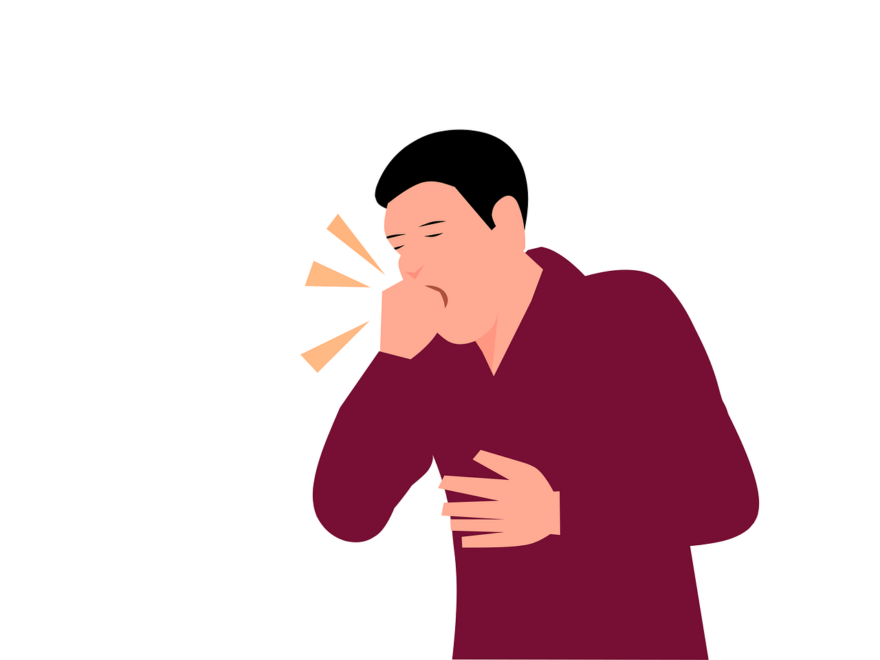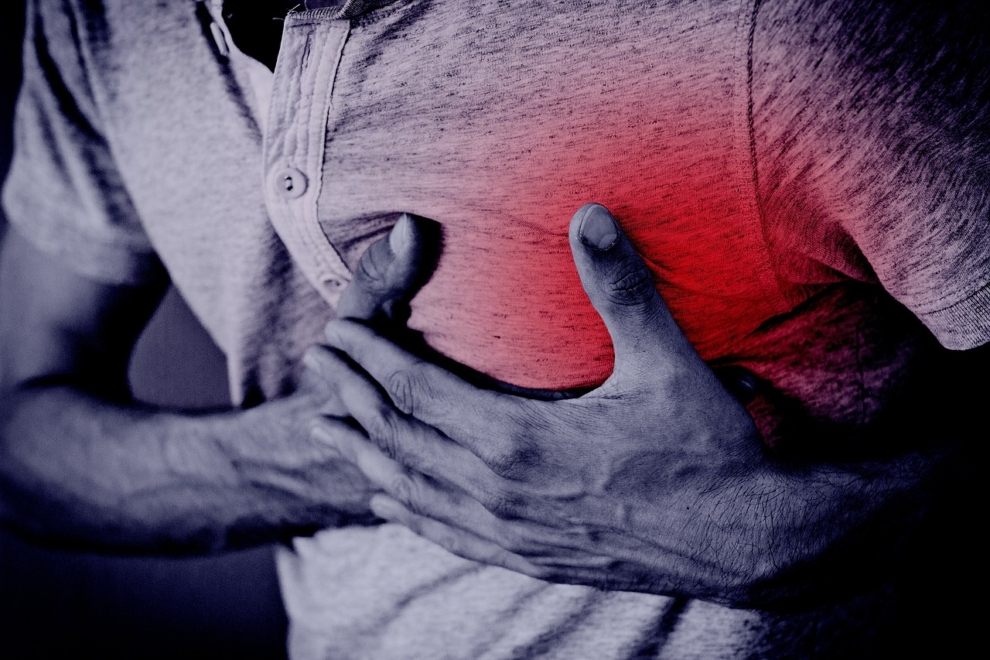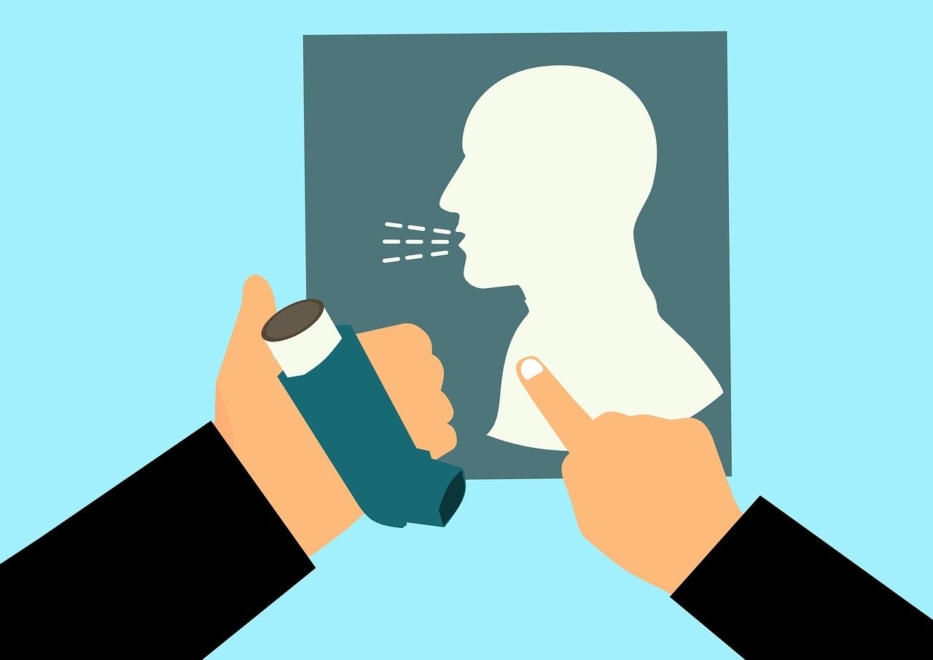
Emphysema takes a long time to develop, with symptoms not showing until later. Eventually, respiratory symptoms appear. Patients with emphysema usually come to the doctor with non-specific symptoms like a dry cough. The cough is nonproductive (not producing phlegm) in the early stages of the disease. A dry cough is extremely chronic and annoying and usually accompanies irritation and a dry throat. It is a symptom that lasts and worsens, affecting the patients’ functioning and making it difficult to breathe freely.
Cough attacks are continuous cough reflexes even at night, reducing your sleep quality. The sputum may be seen in an exacerbation of the disease. An infection or other environmental factor is what typically converts a dry cough into a wet cough. Coughing is a defense reflex of the body, used to expel air at high speed to clear the airway.
2.
Emphysema is a type of COPD and is a progressive disease. Chronic respiratory symptoms characterize it. Airflow limitation can cause dyspnea, a symptom that patients frequently complain of. Abnormalities of the airways or alveoli are responsible for the dyspnea. Emphysema clinical symptoms are the result of injury to the direct peripheral airways distal to the terminal bronchus.
The process is typical for emphysematous changes in the lungs due to irreversible lung air space enlargement and the accompanying progressive destruction of lung parenchyma and loss of elasticity. Less air can move out, leading to breathing difficulties due to the high air volume in the lungs. Several factors can make this shortness of breath worse, like with exercise.
3.
Emphysema is a chronic disease. Symptoms typically present early and gradually lead to a slow decline in the patient’s state. One of the significant features that appears as the disease advances is weight loss. Weight loss due to systemic inflammation may be noted in the later stages of the disease in patients with COPD. Moreover, elevated inflammation increases respiratory energy expenditure, causing weight loss. This symptom is compounded by periodic exacerbations in which airway obstruction improves.
Patients experience moderate to severe weight loss. Consequently, if this unintentional and uncontrolled weight loss occurs with another characteristic symptomatology of emphysema, it can be an important sign of the illness. If you are losing weight when you are not changing your diet, then it is best to visit your doctor and discover the underlying issue.
4.
Emphysema is one of the diseases that many people worldwide suffer from. The disease may be present, but patients might not realize it while suffering from bothersome symptoms. For example — a symptom may be chest tightness. The disease causes irreversible damage to parts of the lungs, which causes discomfort. Patients may feel a strange sensation of tightening in the chest, which can be painful. It involves chest pain with breathing and aggravation with activity.
Emphysema is asymptomatic in its early stages. Tightness in the chest can indicate an advanced stage of the disease. So, do not underestimate it; get the doctor to check it and determine the cause of the condition. As an emphysema patient, you will suffer mold that can manifest into a physically deformed chest. It is also worth remembering that it is a fatal disease.
5.
In the later stages of emphysema, a wet cough replaces a dry cough, and sputum is expected. Phlegm is a viscous fluid released by the respiratory system. Coughing is the means by which the body expels this liquid. Mucus overproduction may additionally occur in response to certain conditions. A wet cough can be due to an infection. Dry air, allergens, or side effects of medications can also increase mucus. When mucus becomes more viscous, it means that the body is striving to combat harmful agents.
Phlegm also tends to take on a particular color in emphysema. The abnormal mucus is yellow or green in color. Colors like these can suggest inflammation. It can also occur in healthy patients, but the amount of fluid is considerably less.
6.
If your breathing is noisy, this could be an important symptom that suggests emphysema. Patients may exhibit wheezing as a result of obstruction of airflow. Wheezing is thought to result from fluttering vibrations of airways due to low airway wall tension and low airflow velocity. Noisy breathing also dependent upon the location of the obstruction in the airway; thus, both the quality and duration of wheezing are inherent to the location of the obstruction.
Wheezing is a high-pitched sound on expiration or inspiration that is produced from anywhere between the larynx and distal bronchi during breathing. Noisy breathing is heard with a stethoscope during the medical examination. Others see similar symptoms in asthmatics but would need to rule out emphysema and other potential causes of shortness of breath.
7.
Mild, non-specific symptoms, such as shortness of breath, can occur at the start of the disease. The way in which the symptoms progress can provide crucial signals that we are up against emphysema. Abdominal breathing problems gradually become worse during the disease. Classical features of COPD include exertional dyspnoea only with ample physical activity. Patients cannot breathe properly, especially when using their arms at or above shoulder level.
As the illness advances, dyspnea becomes more common in activities of daily living or even at rest. It should be mentioned that the impact of the dyspnea symptom is not constant following the exacerbation episodes because the symptoms can come and go over a week. This is then followed by the clinical manifestations of an exacerbation episode, that is, increased dyspnea, increased coughing, and increased sputum.
8.
Chronic and high exposure to dangerous gases will lead to emphysema, in which case the most common cause is cigarette smoking. Thus, knowing whether or not a patient smokes cigarettes is valuable information for any physician or doctor. In smokers, you may simply see signs of it without even taking a history. Restoration users would possibly have an odor of tobacco smoke and have nicotine-stained palms. Frequent exposure to the harmful substances in the smoke stains the nails and fingers of smokers yellowish in color.
None of these symptoms are related directly to lung disease, but they are important because up to 90% of COPD patients are identified as cigarette smokers. It is important to determine the number of years their last smoking time and how much smoking. Sufferers typically only develop symptoms after smoking a minimum of 20 packs of tobacco every year. And in some cases, emphysema also develops among the non-smokers. Environmental pollutants such as sulfur dioxide have been identified as major contributors in developing countries.
9.
It is not the most characteristic symptom, but it is a sign of essential importance in certain cases. Subcutaneous emphysema is rather an uncommon occurrence and is sometimes linked with pneumothorax. It can present as angioedema. Subcutaneous air development can be a mild sign or a manifestation of a more serious disease process. This condition happens when air gets to the tissues under the skin and soft tissues.
It typically develops in the soft tissues of the chest wall or neck but may also develop in other regions of the body. So, the disease manifests as a distinctive swelling of the abdomen, chest, neck, or face. Closure of the eyelids may also occur, causing vision distortion. Such swelling can result in very painful symptoms. Diagnosis is based on physical examination.
10.
Emphysema is a very tiring disease that’s well-known, especially for patients who suffer from it on a long-lasting basis, since a number of different symptoms can prevent the patient from achieving adequate rest. General tiredness and fatigue are common complaints among patients and are a reason for severely impaired daily functioning. Some patients may need help with regular early morning tasks, including getting out of bed, washing, and getting dressed. These types of individuals have immense restrictions, which further deteriorate their wellness, with the constant fear that they will become a burden to their families.
The possible impact of the nocturnal component of COPD symptoms is another important aspect. Because breathing with cough and dyspnea makes sleep difficult, patients may be more fatigued than other patients. Challenges may occur at different levels of disease severity. Flare-up symptoms lead to a severely impaired sleep quality.
11.
Although gas exchange is impaired in the course of emphysema, cyanosis does not develop in most patients. However, different major clinical signs can be seen. This special term is sometimes used for patients who have emphysema. Such patients are referred to as pink puffers because of their appearance. The condition leads to breathlessness, especially during exertion, so breathing is shallow and quick. As a result, the skin tends to turn red or pink when breathing.
Patients will be transiently flushed on the cheeks and face. During physical activity, an unexpected flushing response is not uncommon. An important point to keep in mind is that these signs must not be neglected, as the last phases of the condition result in respiratory failure. Hypoxia can cause failure of various vital organs, such as the heart or kidneys, and the most severe types can cause death.
12.Moreover, emphysema may cause mental symptoms, too, in addition to bodily indications. Patients with chronic disease have significant levels of psychological distress, including anxiety and depression, which is higher than the general population. As such, there is a close association between dyspnea symptoms and anxiety disorders. Anxious patients can develop either dyspnea or exacerbation of their base symptoms.
Anxiety disorder can also result in a cycle of symptoms. Persistent stress leads to immune depression and a higher risk of respiratory infections and exacerbations. Patients may also have measures of depression symptoms of varying severity. They may develop obsessive ruminations, phobias, and excessive concern over their physical health. These people need professional psychological help. Evaluative depression symptoms have been linked to mortality increase.